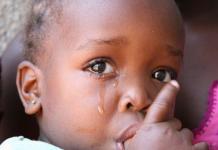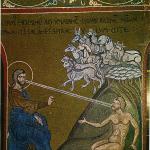I carry out correctional work with children with visual impairments in the conditions of a natural pedagogical process. It is built taking into account the leading didactic and specific principles for this group of children. The latter include the principles of corrective education, taking into account primary and secondary defects, relying on intact analyzers and creating a polysensory basis, forming comprehensive ideas about the world around us based on various forms of verbal and nonverbal activity, taking into account the levels of speech development and the structure of speech impairment, relying on intact components of speech activity, taking into account the novelty, volume, and increasing complexity of verbal material.
In the process of correctional work, a complex multilateral impact is carried out, organized by a speech therapist, typhlopedagogue, educator and educational psychologist in a system of various activities with children.
In correctional work, great importance is attached to speech therapy in specially organized classes, which are conducted differentiatedly, taking into account the state of vision of children, their speech, methods of perception and individual characteristics. In accordance with this, I complete speech therapy subgroups. Considering the specifics of working with children with visual impairments, I spend a significant amount of time working with them individually.
Together with teachers and a typhology teacher, I determine tasks aimed at correcting speech disorders. Correctional and speech therapy tasks for the development of speech culture are solved in play, educational and work activities, as well as in musical rhythmic classes.
When organizing speech therapy classes with children with visual impairments, I pay special attention to the possibility of using existing vision: I use didactic material of the required size, color and volume, relief pictures, “magic bags” with a set of toys, cubes and blocks to indicate sounds, construct syllables, words and sentences. If possible, I suggest completing tasks in a vertical plane.
In working with these children, in order to form ideas about the diversity of the objective world, I attach great importance to natural clarity.
A mandatory element of classes is play, since in children with vision pathology (before training), the prerequisites for play activity are formed later.
When planning correctional and speech therapy work with children who have the first level of speech development, I take into account their good speech base. I focus on working to improve the phonetic aspect of speech. I conduct exercises and games that promote the development of auditory attention.
Considering that in children with visual impairments the formation of speech motor images by imitation is significantly affected, I use methods of mechanical production of sounds, accessible comparisons of the articulation of sounds with images of objects, kinesthetic sensations, etc., using entertaining elements.
When planning speech therapy work with children who have the second level of speech development, I take into account and save all the sections used for children of the first group. But at the same time, I pay special attention to vocabulary work, the development of phonemic analysis and synthesis.
When working with children of the third and fourth levels of speech development, I use elements aimed at correcting subject-related, practical, playful and cognitive activities /in agreement with the typhology teacher and educators/. Improving motor skills, coordination, spatial orientation and constructive praxis is integral. I link this work with the development of speech skills and the formation of relevant concepts. It is based on the formation of in-depth ideas and real knowledge of children about the world around them. On this subject basis I build the development of their speech.
Taking into account the characteristics of the children of these groups, I pay main attention to expanding their vocabulary, the correct correlation of the word with the image of the object, the formation of generalizing concepts, grammatical structure and coherent speech.
The work is based on the formation of speech stereotypes, the accumulation of which is built by isolating generalizing or contrasting features. The accumulation of vocabulary and practical mastery of grammatical structure ensure the transition to drawing up sentences using pictures, supporting words, as well as ideas that children can form about the world around them, based on descriptions of their experience.
In the system of speech therapy classes, I work on the weakest links in children’s speech activity. But my joint work with educators, a typhlopedagogue and an educational psychologist creates an integral system that provides the speech basis for school education. On the basis of a formed speech basis, it is possible to move on to work, for example, with children who have the third and fourth levels of speech development, to developing automated sound pronunciation skills and to teaching operations on phonemic analysis and synthesis.
Children with visual impairments and with the third and fourth levels of speech development, i.e. with general underdevelopment of speech, they cannot fully master the educational material in classes with the whole group. The lag not only affects the development of speech, but also impaired attention, memory, and faster exhaustion of the nervous system. Therefore, I group such children into subgroups by year of study, taking into account the level of speech development. I conduct the following types of classes:
- - classes on the formation of coherent speech;
- - classes on pronunciation formation / see Appendix /.
I conduct classes in individual and subgroup form.
With the children of the senior group, I conduct three subgroup lessons weekly (two lexical-grammatical and one phonetic), and with children in the preparatory group - four lessons (two lexical-grammatical and two phonetic).
To enhance the correction and development of speech of children with visual impairments, I work in close contact and interaction with parents. Every week, in individual notebooks, I include tasks for parents to work with their children on weekends in order to consolidate the acquired skills.
In the first period of training, I include the following sections in speech therapy work:
- - formation of readiness skills for speech therapy classes / focusing attention on the speech therapist, understanding the speech therapist’s instructions, monitoring one’s activities, and the ability to play with figurative toys-characters together with the speech therapist, first by imitation, and then by verbal instructions, to perform simple dramatized actions/ ;
- - correction of sound pronunciation defects / development of movements of the articulatory apparatus to form an articulatory base for the production of impaired sounds, sound production, for strengthening the skill of sound pronunciation in forward and backward syllables, with a combination of consonants, in words, in sentences/;
- - development of auditory attention, purposeful perception with the help of hearing, conscious discrimination of sounds, differentiation of sounds in the surrounding reality by ear, reproduction of sounds by imitation/;
- - development of phonemic hearing / finding sound in words perceived by ear, finding sound in the names of objects /
- - development of speech breathing /development of prolonged speech exhalation and inhalation/;
- - voice development /development of timbre and voice strength/;
- - development of motor skills /general, fine in combination with the development of tactile perception/,
- - developing the ability to speak correctly, clearly, distinctly. Pronouncing sayings, riddles, quatrains;
- - development of the semantic side of speech /correlation of an object and image with a word/.
- - correction of defects in sound pronunciation / development of movements of the articulatory apparatus, which helps to form the child’s articulatory base for the production of impaired speech sounds, production of impaired sounds, consolidation of sounds in syllables, words, phrases, sentences, consolidation of sounds in independent speech/.
In the second period, I include the following sections in the work:
- - development of general speech skills /learning poems, nursery rhymes, sayings, tongue twisters, learning to observe intonation, familiarization with stress/;
- - development of phonemic perception and representation, training /converting one word into another by replacing, adding, truncation of sounds/;
- - development of speech hearing /training in intonation analysis and synthesis/;
- - development of phonemic hearing /learning to find sounds in a word, in the names of objects in a picture, distinguishing individual sounds, different sounds/;
- - development of motor skills /general: conducting physical education lessons, speech games with movements, round dances, role-playing games, fine: developing drawing skills, learning to distinguish features by texture/;
- - development of the lexical side of speech / familiarization with new words, specification of new and existing words, the subject relationship between the word and the image of the object, the formation of generalizing functions of the word, using topics on speech development: family, toys, body parts, seasons, vegetables, fruits, berries, domestic and wild animals, clothing, dishes, furniture, insects, etc./;
- - development of correct grammatical speech /learning to answer questions in full sentences, working on mastering the connection between words in a sentence, learning to answer questions based on content using dramatization games, puppet shows/;
- - improving the grammatical design of speech / teaching the use of singular nouns in speech. and many more including the genitive case, nouns in the diminutive form, teaching the agreement of verbs with nouns in person and number, the formation of perfect and imperfect verbs, the agreement of nouns with numerals/;
- - development of spatial relationships and ideas /training in the practical use of prepositions: in, on, for, over, because of, from under, between, etc./;
- - formation and development of sound analysis and synthesis /familiarity with the terms “sound”, “syllable”, “words”, “sentence”/.
During the third period of training, I deal with the following sections of speech therapy work:
- - correction of sound pronunciation defects / development of mobility of the articulatory apparatus, sound production, automation of the skill of sound pronunciation in syllables, words, phrases, sentences, poems, texts, automation of the skill of sound pronunciation in independent speech, differentiation of sounds /;
- - development of general speech skills and speech hearing /training to observe intonation in sentences, observe stress, work on voice modulation/;
- - development of phonemic perception and representation /learning to use words of two- and three-syllable structure/;
- - development of motor skills /general: conducting physical education lessons, round dances, role-playing games, etc., fine: working with mosaics, pencil, developing graphic skills/;
- - development of the lexical side of speech / specification of existing words, replenishment of vocabulary, classification of names of objects, selection of words characterizing actions and characteristics of objects /;
- - development of coherent speech / training in answering questions, the ability to give a simple assessment of what is read, coherent storytelling without deviating from the content, presentation of one’s thoughts and events in a logical sequence, oral presentation of a short text with the help of a speech therapist/;
- - improving the grammatical design of speech / teaching comparison and juxtaposition of nouns. and many more numbers with endings -и, -ы, -а, correct use of personal endings of singular verbs. and many more numbers, the ability to select nouns for possessive pronouns/;
- - development of dialogical and monologue speech /learn to answer and ask questions to each other, learn to consciously perceive the material, be able to find connections between the facts and phenomena described, be able to express your attitude towards the characters of the story, fairy tale, their actions, dramatize texts, fairy tales/;
- - develop the skills of sound analysis and synthesis, the formation and development of phonemic hearing, learning to identify a sound against the background of a word, a sound at the beginning of a word, at the end of a word, in the middle of a word, determining the sequence of sounds in a word, the number of sounds in a word, the place of a sound in a word in relation to other sounds, training in sound analysis and synthesis of one - complex words, dividing words into syllables, using clapping for auditory support, for visual support schemes in which words are indicated by a long strip, syllables by a short strip, vowel sounds - by red squares, consonants sounds - blue, hard, green - soft, familiarization with letters, construction of letters.
This article is addressed to speech therapists as help when working with children with visual impairments. The features of visual perception of this category of children, the main accents and priorities of the direction of work are revealed to achieve better results in overcoming speech disorders.
Speech disorders and related diseases
Currently, there is a steady increase in children with speech problems. The proportion of children with speech defects (dyslalia, dysarthric disorders, stuttering, lexico-grammatical disorders, phonemic perception disorders, etc.) is increasingly increasing. But it often happens that children do not always have one problem - speech impairment, but also others.
For example: minimal hearing impairment, behavioral disorders of organic origin (hyperactivity, attention deficit disorder), minimal visual impairment, with strabismus and amblyopia, etc.
When passing the territorial psychological, medical and pedagogical commission (PMPC), where a comprehensive examination of the child is carried out, parents receive recommendations on providing psychological, medical and pedagogical assistance and organizing the education and upbringing of the child. Depending on the complexity of the disease, it is suggested to attend one or another preschool institution.
Corrective work with a child with visual impairment
Children often come to a specialized speech therapy kindergarten with concomitant diseases, including visual impairment. All preschool specialists comprehensively study the pupil and develop measures of pedagogical influence, taking into account the identified characteristics and speech disorders.
However, the organizer and coordinator of all correctional and developmental work is the speech therapist teacher. He determines an individual route for each child, conducts medical and pedagogical consultations, draws up, together with colleagues, a block integrated calendar and thematic plan, organizes diaphragmatic-speech breathing, corrects defective sounds, automates them, differentiates them, introduces them into independent speech, promotes the practical mastery of children word formation and inflection skills.
When a child with a concomitant illness comes to the group, the speech therapist teacher takes into account the characteristics and capabilities of this child in correctional work. If there is a child with visual impairment in a speech therapy group, then it is important for the speech therapist to know that his visual perception differs sharply from the perception of a normally seeing child in terms of completeness, accuracy and speed of display.
Due to visual impairment, a child can see not the main, but secondary signs of objects, and therefore the image of the object is distorted and thus fixed in memory. Often the child’s gaze glides over the surface of an object, stopping only on what is practically significant for him and is connected with his emotional experiences.
Often the child does not grasp semantic, color and other signs. The perception of the shape of objects and their spatial arrangement suffers significantly. Impaired vision makes spatial orientation difficult and delays the formation of motor skills and coordination. It makes it difficult to perform mental operations of analysis and synthesis, which are reflected and are the object of knowledge of various aspects of reality.
To form speech, a child needs active interaction with people around him and a richness of subject-matter and practical experience due to the stimulation of different analyzers (auditory, visual, kinesthetic). Children at risk for vision who can attend a speech therapy kindergarten, as a rule, have relatively minor defects: a delay in the development of binocular fixation, the development of strabismus, and subsequently amblyopia, defects in tracking eye movements, limited visual field, and decreased visual acuity.
The speech therapist teacher needs to know the child’s visual diagnosis and regularly talk with parents about the stages of treatment and the ophthalmologist’s recommendations.
Conditions favorable for the development of visual perception
Particular attention should be paid to creating conditions in the process of correctional pedagogical activities that are favorable for the development of visual perception.
Correct and sufficient room lighting I, where is the child.
Necessary dose visual load: no more than 10-20 minutes. During classes, after 10 minutes of constant visual load, it is recommended to perform visual or motor gymnastics.
The child should be close, preferably in the center, to the visual demonstration material and, with the permission of the teacher, be able to approach and examine it.
Both visual and handout material should be large, clearly visible in color, outline, silhouette (check the visual load and size of the handout with an ophthalmologist).
For a child with visual impairment, a speech therapist teacher can adapt visual aids. The size of objects should be determined depending on the age of the child and his visual capabilities. The material must be clearly visible and correspond to its natural size (a hare cannot be larger than a bear). The main informative features that are most important should be highlighted and emphasized. In images, it is important to highlight signal features (contour, color, shading, size, proportional relationships). Laminated, shiny materials are not used, since light reflection and glare interfere with perception.
For children with convergent strabismus, stands for aids are used so that the gaze is upward, and games with the gaze upward are recommended, and for divergent strabismus, aids and games should be in a horizontal position on the table so that the gaze is directed downward and close.
Knowing the characteristics and needs of a preschooler with speech and vision impairments, a speech therapist teacher, together with other specialist teachers, parents and medical staff, can create a model of correctional and developmental activities taking into account the leading lines of development of the child and prevent secondary deviations in the development of his cognitive, emotional and personal spheres.
It is known that early psychological and pedagogical correction improves the prognosis of personality formation and its socialization.
Social and household
orientation
preschoolers
visually impaired
(forward planning
and special notes
correctional classes)
From work experience
State educational institution compensatory kindergarten
No. 2245 SZOUO Moscow
(for children with visual impairments)
Editor-compiler E.N. Podkolzina
Moscow 2007
UDC 376.1-056.262+373.2.035
C69 Social and everyday orientation of preschoolers with visual impairments (long-term planning and notes of special correctional classes) / Ed. E.N. Podkolzina. - M.: City of Childhood, 2007. - 256 p.
ISBN 978-5-903428-02-1
The collection is compiled on the basis of materials from the experimental work of the state educational institution compensatory kindergarten No. 2245 (for children with visual impairments) of the North-West Educational Institution of Moscow on the topic “Social and everyday orientation for preschoolers with visual impairments.”
The close relationship between the correctional and pedagogical work of typhology teachers and psychologists on the formation of socially adaptive behavior in preschoolers with visual impairments with general education and educational processes carried out in kindergarten is shown.
The book is recommended for teachers-defectologists (typhlopedagogues) and psychologists of preschool educational institutions for children with visual impairments, teachers and students of preschool departments of defectology faculties (in the specialties “Typhlopedagogy” and “Typhlopsychology”).
UDC 376.1-056.262+373.2.035
BBK 74.3
© “City of Childhood”, 2007
© Design. "City of Childhood", 2007
ISBN 978-5-903428-02-1
Preface........................................................ ........................................................ ....................................4
Podkolzina E.N. Socialization of preschool children with vision pathology in the conditions of a compensatory educational institution.................................................... ...............................7
social and everyday orientation of preschoolers
visually impaired
Merkulova N.P. Long-term planning of special correctional classes in social and everyday orientation (junior group)................................................. .................................. 15
Merkulova N.P. Notes of special correctional classes on social and everyday orientation (junior group).................................................... ........................................................ ................29
Kuznetsova O.A. Long-term planning of special correctional classes in social and everyday orientation (middle group)................................................. ...... .....................52
Kuznetsova O.A. Notes of special correctional classes on social and everyday orientation (middle group)................................................... ........................................................ .................64
Tikhonova T.M., Ulanova T.V. Long-term planning of special correctional classes in social and everyday orientation (senior group).................................................... ...............82
Tikhonova T.M., Ulanova T.V. Notes of special correctional classes on social and everyday orientation (senior group)................................................... ................................................... 104
Guzenko V.P., Maksimenko T.E. Long-term planning of special correctional classes in social and everyday orientation (preparatory group)...................................150
Guzenko V.P., Maksimenko T.E. Notes of special correctional classes on social and everyday orientation (preparatory group)................................................... ...................................169
Literature................................................. ........................................................ ....................................212
Materials of experimental work on the problem
social adaptation of children with visual impairments
senior preschool age
Kostenko S.I. Long-term planning of correctional work on the socio-psychological development of children with visual impairments of senior preschool age................................................... ........................................................ ........................................................ ..... 215
Kostenko S.I. Lesson notes for a teacher-psychologist (senior preschool age)................................................. ........................................................ ........................................................ 223
Literature................................................. ........................................................ ...................................252
Preface
State educational institution compensatory kindergarten No. 2245 for children with visual impairments (head - Torgova Natalya Yuryevna, senior teacher for correctional work - Tikhonova Tatyana Mikhailovna, senior teacher - Makhonkova Galina Vladimirovna) since September 2004 has been an experimental site of the SZOUO of Moscow . The scientific supervision of the experimental work on the topic “Social and everyday orientation of preschoolers with visual impairments” is carried out by Elena Nikolaevna Podkolzina, senior researcher at the State Scientific Institution “IKP RAO”, Candidate of Pedagogical Sciences.
For a number of years, teachers-defectologists (typhlopedagogues) have developed and tested long-term planning and content of special correctional classes on social and everyday orientation for all age groups (younger, middle, senior, preparatory) - in accordance with the correctional program on social and everyday orientation ( Programs of special (correctional) educational institutions of the IV type (for children with visual impairments). Correctional work in kindergarten / Ed. L.I. Plaksina - M.: Exam, 2003).
When determining the content of classes, modern general methods were used (see the list of references), modified and adapted by teachers in relation to the requirements of remedial education for preschoolers with vision pathology.
The collection opens with an article Podkolzina E.N.“Socialization of preschool children with visual impairments in a compensatory educational institution.”
Attention is drawn to the special importance of special correctional classes of a visual education teacher on social and everyday orientation in solving the problems of socialization of preschool children with visual impairments.
Materials of experimental work on the problem of social and everyday orientation, including the work of teachers-defectologists (typhlopedagogues), arranged by age groups. Thus, the results of their experimental work were presented by teachers-defectologists (typhlopedagogues) Merkulova N. P.(junior group), Kuznetsova O.A.(middle group), Tikhonova T.M. and Ulanova T.V. ( senior group). Guzenko V.P. and Maksimenko T.E.(preparatory group).
Long-term planning developed by typhlopedagogues completely covers the school year of each age group. Lesson notes provided reflect some stages of learning social and everyday orientation of preschoolers with visual impairments of this age. Before each summary it is indicated in which month this lesson is held and its number in accordance with the long-term plan. We draw the attention of typhology teachers to the fact that physical education is carried out only in those classes (and this is highlighted in the notes) where children perform tasks associated with increased visual and mental stress. Many classes include elements of children’s motor activity, so there is no need to also conduct physical education. Moreover, in some notes the need for physical education minutes is simply indicated (carrying out physical education minutes), in others these physical education minutes are described.
It should be noted that the material in the collection reflects the relationship and continuity of correctional pedagogical work carried out by defectologists (tiplopedagogues) and educators. Thus, in each summary of a special correctional lesson on social and everyday orientation there are sections “Preliminary work” and “Recommendations for educators”, which indicate the activities carried out
educators on the instructions of the typhlopedagogue. This organization of correctional pedagogical work makes it possible to create the most favorable conditions for preschoolers with visual impairments to master social and everyday orientation, to consolidate and improve the skills they are developing and to gradually include children in independent activities.
This collection also presents materials from the experimental work of a teacher-psychologist at State Educational Institution No. 2245 Kostenko S.I. on the problem of social adaptation of preschool children with visual impairment. When developing them, the author took into account the characteristics of psycho-emotional stress in preschool children with visual impairments.
Kostenko S.I. offers solutions to such important problems for the full mental development of children with visual impairments as “Formation of social trust”, “Development of social emotions”, “Training to independently solve their problems”.
Long-term planning (from October to May) of correctional work on the socio-psychological development of children with visual impairments of senior preschool age is accompanied by lesson notes from a teacher-psychologist (there are 13 of them).
The material offered in this collection can be useful both to beginning typhology teachers and educational psychologists, and to those who already have experience working with preschoolers with vision pathology. It should be noted that the opportunity to use the long-term plans and lesson notes developed by the teachers of the State Educational Institution of Compensatory Kindergarten No. 2245 (for children with visual impairments) will make it possible to significantly better organize correctional and pedagogical work with children, to help them fully master the skills of socially adaptive behavior .
Corrective work is built as a multi-level system that provides a holistic, comprehensive, differentiated, regulated process of managing the entire course of psychophysical development and vision restoration based on stimulation of all potential capabilities of children with visual impairments.
The specificity of correctional work with preschool children consists of: the relationship and interaction of correctional work with all types of children's activities; the comprehensive impact of the content, methods, techniques and means of correction on the child’s psyche; in compensatory development through activities (games, work, activities, etc.); in the integration of the child into the sighted society on the basis of his socially adaptive forms of communication and behavior. Each child needs an individual approach, namely:
- manuals and materials must take into account the child’s visual analyzer disorders,
- time restrictions,
- exercises and games correspond to the diagnosis and age of the children, creating the necessary conditions for each child.
- During the lesson, seat children in accordance with occlusion: with convergent strabismus - in the direction of the taped eye, with divergent strabismus - in the direction opposite to the taped eye.
- The group room and study area must be sufficiently illuminated (a combination of natural and artificial light is allowed), additional lighting is used above the board and on the tables.
- Children should be seated so that the light falls from the left. For a left-handed child, it is recommended to have individual lighting on the right side when working on a table.
- Children with divergent strabismus and low visual acuity should be seated closer to the demonstrated material, with convergent strabismus further away.
- Children with low visual acuity can approach the picture or object in question in order to be able to see them better.
- Use visual material during class:
- real objects surrounding the child in everyday life;
- toys - with clearly defined characteristic features of the object;
- the images are simple, without unnecessary details, with a clear outline, contrasting with the background, without glare;
- demonstration material of red, yellow, orange and green, planar and volumetric;
- size of demonstration material, toys, objects – 15-20 cm;
- handout size – 5 cm, 3 cm, 2 cm – depending on visual acuity.
Present the demonstration material for viewing motionless so that children can focus their gaze; for children with convergent strabismus - on a stand, with divergent strabismus - on a table. The lesson should be structured so that the work of the visual analyzer alternates with the work of other analyzers.
During the lesson, a physical minute and a pause are necessary to perform gymnastics for the eyes. At the beginning of classes in art activities, design and manual labor, perform gymnastics for the fingers and hands.
90% of children attending preschool educational institutions have certain health problems. Pediatricians report that 70% of newborns have various perinatal brain lesions. Such deviations, one way or another, affect the subsequent development and education of the child. Crisis phenomena in society contributed to changes in the motivation of educational activities in preschool children, reduced their creative activity, slowed down their physical and mental development, and caused deviations in social behavior.
Over the past decade, the number of children with disabilities in mental and physical development has increased significantly. A special place in childhood pathology is occupied by visual impairments, which can lead to blindness, residual vision, low vision or deviations in the formation of a full-fledged functional visual system.
“It’s better to see once than to hear a hundred times,” says popular wisdom. Vision plays a big role in human development. 90% of the perception of the external world is carried out with the help of vision. Good vision is necessary for a person for any activity: study, recreation, everyday life. And everyone should remember how important it is to protect and preserve vision. Losing vision, especially in childhood, is a tragedy. Since the child’s body is very susceptible to various types of influence, it is in childhood that special attention should be paid to vision. The issue is especially acute nowadays due to the harmful effects of displays and computers on vision.
This problem is close to me, since I work at MBDOU d/s 54 in Belgorod. Our institution has specialized groups for children with visual impairments.
Children attending these groups have various visual pathologies and low visual acuity. Most often, the most common diagnoses are farsightedness with strabismus, farsighted astigmatism, myopia, and amblyopia.
Visual impairment in children is combined with a number of neurological syndromes, which indicates not only a delay in the maturation of the central nervous system, but also damage to individual brain structures. This manifests itself, first of all, in impaired mental performance, voluntary activity and behavior of children, as well as rapid exhaustion and satiety with any type of activity, increased excitability, irritability, motor disinhibition, and changes in fine motor skills.
Therefore, the problem of restoring the child’s health comes to the fore in preschool educational institutions.
It should be noted that a child attending a specialized group must spend a certain amount of time every day for therapeutic training sessions, from which kindergarten children in regular groups are free. This problem is solved by combining therapeutic ophthalmological measures with pedagogical activities aimed at preventing the restoration of visual acuity and eliminating strabismus.
Work on vision prevention should be carried out systematically and be purposeful and conscious; It is necessary that it be of some interest to children and combined with elements of entertainment. Corrective exercises can be used in various activities by teachers of general education groups for the prevention of vision, and by parents.
1. Effective for increasing visual acuity, developing fine motor skills of the hands, with coordinated actions of both hands, exercises for sorting and stringing beads.
These tasks also contribute to the formation of binocular vision and color discrimination of primary colors.
The child is invited to make a decoration for the Christmas tree, and beads for the mother. To do this, he needs to string beads onto a thread.
When sorting, select red beads first, then yellow, green, orange, blue.
2. I have included in a separate group exercises for activating the work of the eye muscles, which help relieve fatigue, improve blood circulation, and relax.
Look straight ahead for 2-3 seconds.
Place your index finger at a distance of 25-30 cm from your eyes, look at the tip of your finger, look at it for 2-3 seconds, lower your hand (4-5 times)
Lower your head, look at the toe of your left foot; raise your head, look at the upper right corner of the room; lower your head, look at the toe of your right foot; raise your head, look at the upper left corner of the room (feet shoulder-width apart) (3-4 times).
Look at the tops of the trees in front of the window; turn your gaze and name any object on the ground, find birds or an airplane in the sky and follow them with your gaze; name vehicles passing by or standing on the side of the road.
3. Actively influence the development of visual acuity, eye mobility and cognitive development of the Maze game.
The child is invited to guide various fairy-tale characters to their house by leading a pencil through the maze.
To improve visual acuity I use the game exercise: “Fun Contour”.

I give the children the task of tracing outline images through tracing paper. First, a sheet of white paper with an outline image is placed on the table. Tracing paper on top of the image. Trace the outline. What happened? This image can be cut out, colored, shaded.
5. The ultimate goal of strabismus treatment is to develop binocular and stereoscopic vision. To develop simultaneous vision, perform the following exercise: “Silhouette”.
Overlaying one image on another. Outline images of animals are drawn on a sheet of white paper. And exact copies of these images cut out of colored paper are given (overlay the copies on the drawn images).
6. To develop binocular and stereoscopic vision, the game “Confusion” is used.
The child is shown an image of a picture with various vegetables and objects superimposed on each other. Ask the child to name what objects are drawn and what color they are.
Name the vegetables on the right that are hidden in the confusion.

Name the objects that were hidden in the teapot.

7. Exercise with a stereo trainer.
The device consists of a plastic ruler with four round holes and a ball attached on a string to the end of the ruler. Holding the handle of the device, you need to swing the thread with the ball, trying to get the ball into each hole.

8. The gaze fixation exercise is aimed at developing convergence and developing binocular vision - developed by Academician Filatov.
We stand or sit quietly. We extend our hand. We fix our gaze on the tip of the index finger, keep our gaze on the approaching finger, and simultaneously feel this finger with the other hand.
With this method, in addition to fixation (coordinated work of the visual and motor analyzers takes place).
9 . Trainers for the development of perception and hand-eye coordination.
The place for applying diagrams - simulators - is the walls of the group.
Exercise machine "Butterfly"
Butterfly trainer
Trainer "Eye Routes"


Methodology:
1. Tracking with the eyes along a given trajectory;
2. Tracking with the eyes and tracing the trajectory of movements with the index finger or the index fingers and hands of the same name.
This is a diagram of visual motor projections - developed by the group of Professor V.F. Bazarnogo is used to correct vision and prevent myopia.
The poster shows lines - “Routes” for the eyes, each exercise is performed 15 times.
1. - Smooth horizontal eye movements: left, right.
2. - Smooth vertical eye movements: up, down.
3. - Eye movements clockwise on the red ellipse.
4. - Eye movements counterclockwise on a blue ellipse.
5. - Continuous eye movements along two ellipses.
10. Mark on glass (According to Avetisov).
Allows you to train the eye muscles, contraction of the lens muscles. Helps prevent myopia. The child is asked to look at the circle pasted on the glass, then move his gaze to the most distant point behind the glass and tell what he sees there.
It is a kind of gymnastics for the eyes and just helps them to relax.
Children rub their palms until they feel warm. After this, the palms are placed on the closed eyes so that the center of the palm falls directly on the eye. The palms are the key detail of palming. Hold your palms over your eyes for 2-3 minutes. At this time, you can turn on calm music or read poetry.

12. Relaxation – deep muscle relaxation, accompanied by the release of mental stress.
To restore strength and relieve emotional arousal in children, muscle relaxation is performed to calm them down. Children lie on their backs, relaxing all their muscles, and close their eyes. Relaxation takes place to the sound of calm music.
The following exercises are of particular interest:
Eyelashes droop...
Eyes are closing...
We rest peacefully... (2 times)
We fall asleep in a magical sleep...
Our hands are resting...
They get heavy, fall asleep... (2 times)
The neck is not tense
And she's relaxed...
The lips part slightly...
It's so nice to relax. (2 times)
Breathe easily, evenly, deeply.
We are having a wonderful holiday.
We fall asleep in a magical sleep...
« Tree"Starting position – squatting. Hide your head in your knees, clasp them with your hands. Imagine that you are a seed that gradually germinates and turns into a tree. Slowly rise to your feet, then straighten your torso and stretch your arms up. Then tense your body and stretch out. The wind blows and you sway like a tree.
Regular corrective exercises have shown that:
- In children, visual acuity increases, eye motor functions develop, and binocular vision develops;
- Cognitive activity increases, the psycho-emotional well-being and health of children improves.
Literature:
1. Ermakov V.P., Yakunin G.A. “Development, training and education of children with visual impairments” - M., 1990
2. “Training and education of preschool children with visual impairments” (from work experience), ed. Zemtsova M.I. – M., 1978.
3. Druzhinina L.A. Corrective work in kindergarten for children with visual impairments. – M.: “Exam”, 2006.
4. Grigorieva L.P. Development of perception in children. A manual for corrective classes with children with visual impairments. – M., “Press”.
5. Ermakov V.P. Development, training and education of children with visual impairments. M., 1990.
6. Nagaeva T.I. Visual impairment in preschool children. - Rostov-on-Don: “Phoenix”, 2008.
7. L.I. Medvedev. Treatment of strabismus and amblyopia in children in specialized kindergartens and nurseries. Ed. “Shtiinta” Chisinau 1986.


















